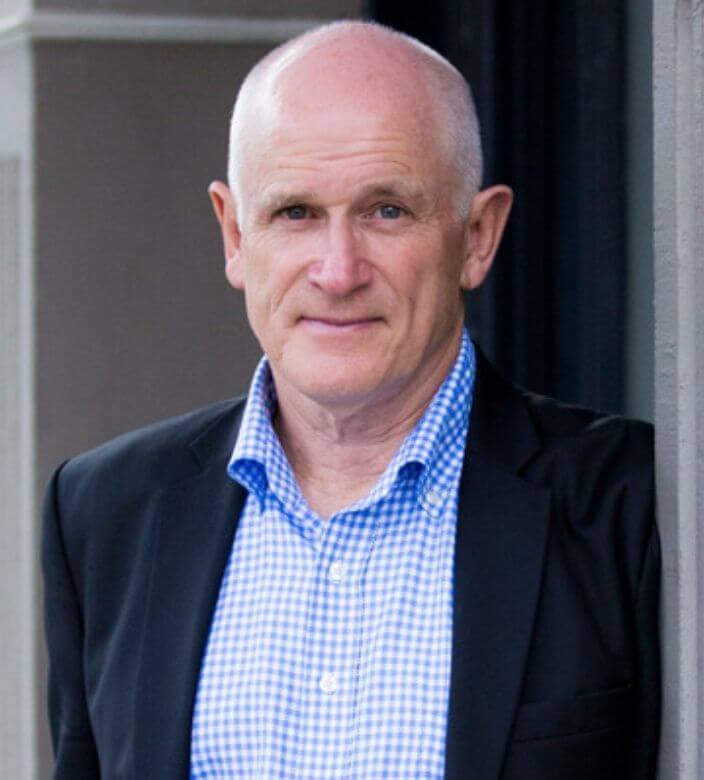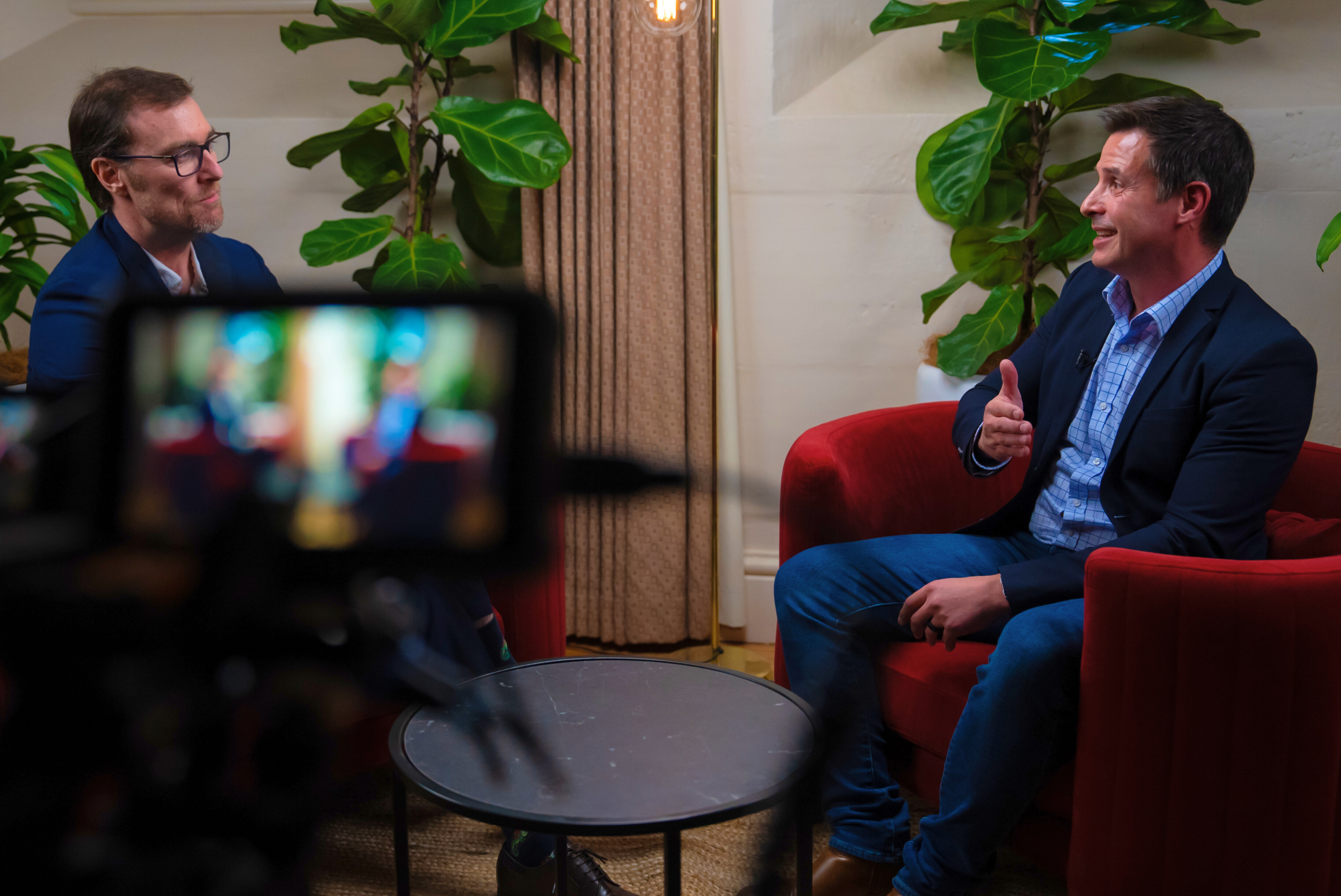Why Auswide Bank’s CFO is Investing in Data-Driven Transformation
William Schafer explains how training internal and external customers to use their digital services and having an external opinion to evaluate the delivery of business outcomes was crucial to their business resilience and growth.During the uncertainties of 2020, William Schafer navigated Auswide Bank to continue delivering Central Queensland homeownership loans.
Speaking at ADAPT’s CFO Edge event with ADAPT’s Senior Analyst, Peter Hind, he explains how training internal and external customers to use their digital services and having an external opinion to evaluate the delivery of your business outcomes was crucial to their business resilience and growth.
He explores the challenges he faced taking his executive peers on the journey of how data-driven transformation can power delivery on bottom lines. He also shares the importance of collaborating with a Chief Risk Officer to ensure the digitisation of finance processes maintains organisational trust.
He also discusses how their agility as a small bank offers them unprecedented opportunities to offer one-on-one private banking with high net-worth individuals seeking larger home loans.
Peter Hind:
Bill, can you tell us a little bit about your role in Auswide Bank? Tell us a little more about the organisation.
William Schafer:
Certainly, Auswide Bank commenced in the 1960s as a building society, really to help Central Queensland customers get a home.
It’s been driven by the community, it’s been driven for customers, and our focus has always been on customers. Of course, as that’s moved forward, Central Queensland customers have aged, as has shareholder base and not always accomplished in digital services.
However, we’ve had to bring those customers with us while still providing for their needs. As we move forward, we want to provide a platform to do that. COVID has helped us accomplish that.
The customers driven through our branches has fallen by about 20% over 2020.”
Even though we’ve opened up a lot more, particularly in Queensland and in regional Queensland, where there hasn’t been a large amount of COVID, the numbers through our branches have not rebounded.
We’re going to need to, and we’ve seen a real need for those customers to use digital services.
Peter Hind:
I’m interested, Bill, because you told me that you were embarking on a digital transformation.
Were you fortunate to be in the right place at the right time when COVID struck in terms of having the resources to deliver?
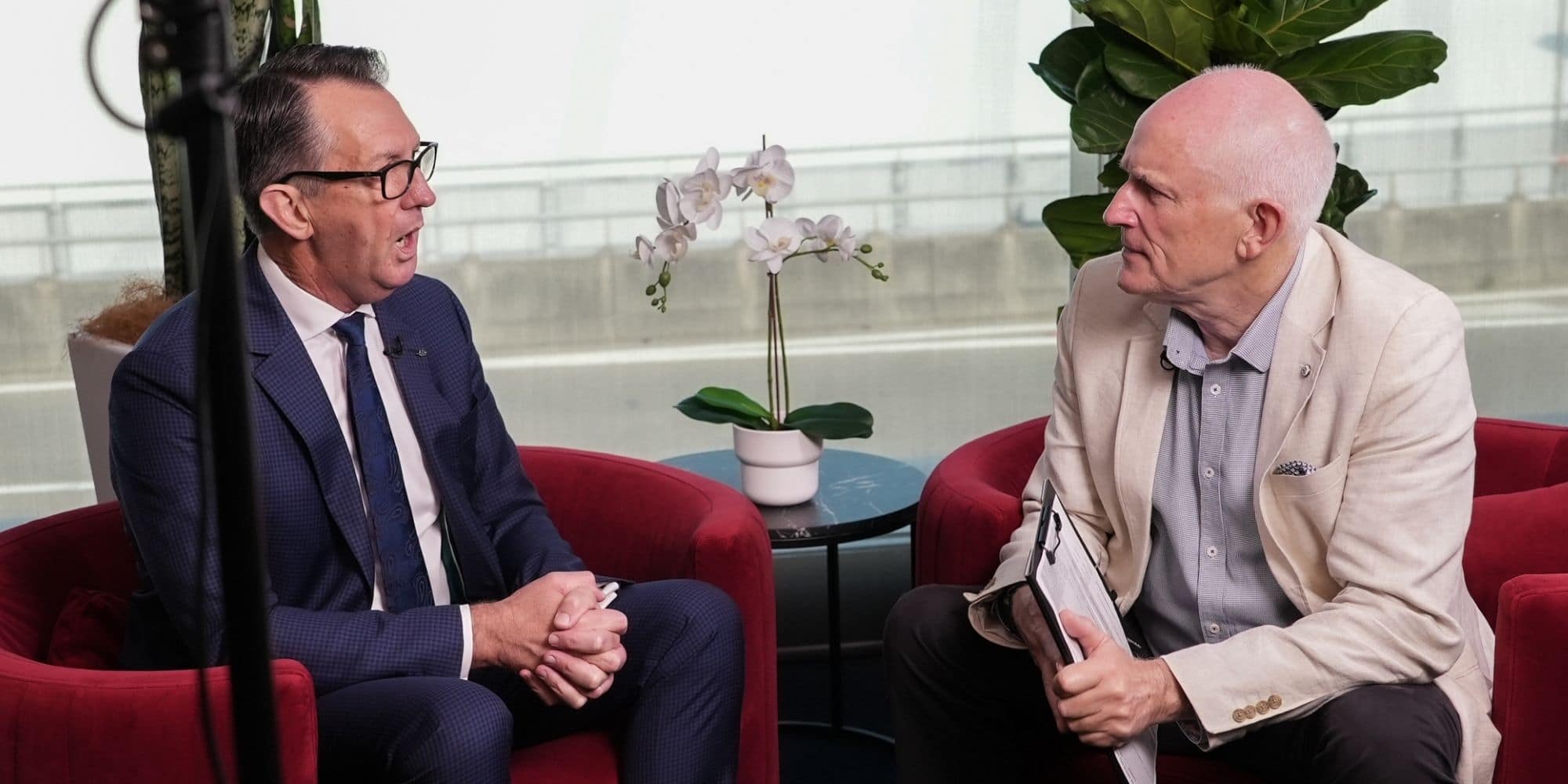
William Schafer:
Absolutely. That is across the board. In 2019, for example, our Business Continuity Programme was probably lagging a little bit behind. Whether it’s good luck or good management, we decided to run some finance tests.
I said to my staff at the end of 2019. We’re going to be working from home in two weeks, knowing that we could not do that necessarily. Still, in November of 2019, by that shock, we got together and were able to operate from home with our treasury and accounting and finance functions.
When February, March of 2020 came, we were ready. As I said, it was a stroke of good luck, but I’m chairman of the Business Continuity Programme. I had to be on top of it. That was great.”
As importantly, we needed to be looking out for our customers, probably more importantly.
Those senior citizens we deal with, which are the backbone of our bank, provide our funding. It’s not only about getting the loans out there; they provide the funding for our bank.
We’ve had an opportunity to train, get email addresses, get mobile numbers, and train them to use those to do digital transactions. It’s really basic stuff, but it’s about providing the omnichannel service for our customers, and COVID’s helped us.
Peter Hind:
I get the feeling that what you said is post-COVID. As we move through it, the customers are quite happy with these platforms. There’s not a desire to go back to the old way of doing things.
William Schafer:
Well, once you’ve used the digital services, you’re going to stick with them. I don’t go into a branch for anything other than that’s not business-related for the bank.
People are learning that process. If you can do it online, if you can make your payments, if you can apply for your loan, transact BPAY, Apple Pay, Google Pay, whatever you need to do, people will use that.
Peter Hind:
Bill, I’m hearing you say your digital transformation is digitising the applications you deliver to customers. What was the hardest challenge of digitising those applications, and how did you overcome that?
William Schafer:
The process of digitising the applications is very difficult. It’s a combination. All the organisational components have to work together.
We being a smaller bank, have silos, believe that or not. We’ve had to work very, very hard at that. We’ve brought in an external person at a chief level to bring us all together, set our priorities.
As a CFO, I have the strings of the budget to control. We stood back in the last year, we took the 17 major requests that were required across the organisation, and we pulled them apart.
We challenged what the budget was for each digitisation process, what it would deliver to the bank and then reprioritised them.”
In a month, the top five are going to be ticked off by the board. We pulled it apart. One of the missing things was the rewards we’re going to reap from the investment and the need to convince the board that that will deliver to our customers.
That’s got to be the key. Now, of course, we’re a public company. We’ve always got an eye on the bottom line.
Our shareholders are very important. Our stakeholders have to be considered across the board, but ultimately if you’re not delivering to your customers, it will not deliver to the bottom line.

Peter Hind:
I hope they build prioritisation points because you can sometimes get overwhelmed by the magnitude of a transformation. Still, the ability to say what will be the best investment of our time to deliver progress helps people see the journey.
William Schafer:
Absolutely. I had to deliver a finance transformation process. In some stages, it’s difficult to convince people that that’s going to deliver to the bottom line.
We had to show them how that transformation process will deliver to the bank over the next two years because rolling out budgets, rolling out P&L accounts, and balance sheets is not a very sexy business.
We’ve got to convince people that it’s more than that. It’s a data-driven business.
Peter Hind:
I’m interested, Bill, because part of the traditional role of the CFO is the gatekeeper.
You reign in the exuberance of people for the new, you’re the doubting Thomas, to question people, and yet I sense in you, in some ways, you’re the evangelist for this approach.
Have you lost sight of your heritage in that?
William Schafer:
Not at all. I would prefer to be the one out there pressing the boundaries saying if we don’t invest, we will be left behind because, ultimately, short-sightedness in this investment process will hurt us in the long term.
Yes, I am pressing for investment. Now it’s got to be sensible. People know that I’m conservative by nature in the way I do the finances.
Still, we’ve got to press the limits because if we don’t invest in our digitisation at this stage, we’ll be left behind, and we’ll leave our customers behind.”
During COVID, another great advantage for banks was the First Homeowner Deposit Schemes that the government put into place. We have ridden on a wave of success, partly contributed to by that.
We’ve got millennials coming in, the first homeowners, and they’re saying that’s fine, but you sponsor the QRL, where’s my QRL Jersey, but more importantly, where’s my Google Pay? Where’s my Apple Pay? Where’s all the digital platforms? I don’t have to go near a branch.
Surprisingly, they still want branches, but they don’t want to go into them. They want to be able to get on their phone or their Apple watch or whatever it is, and bang, their businesses are done.
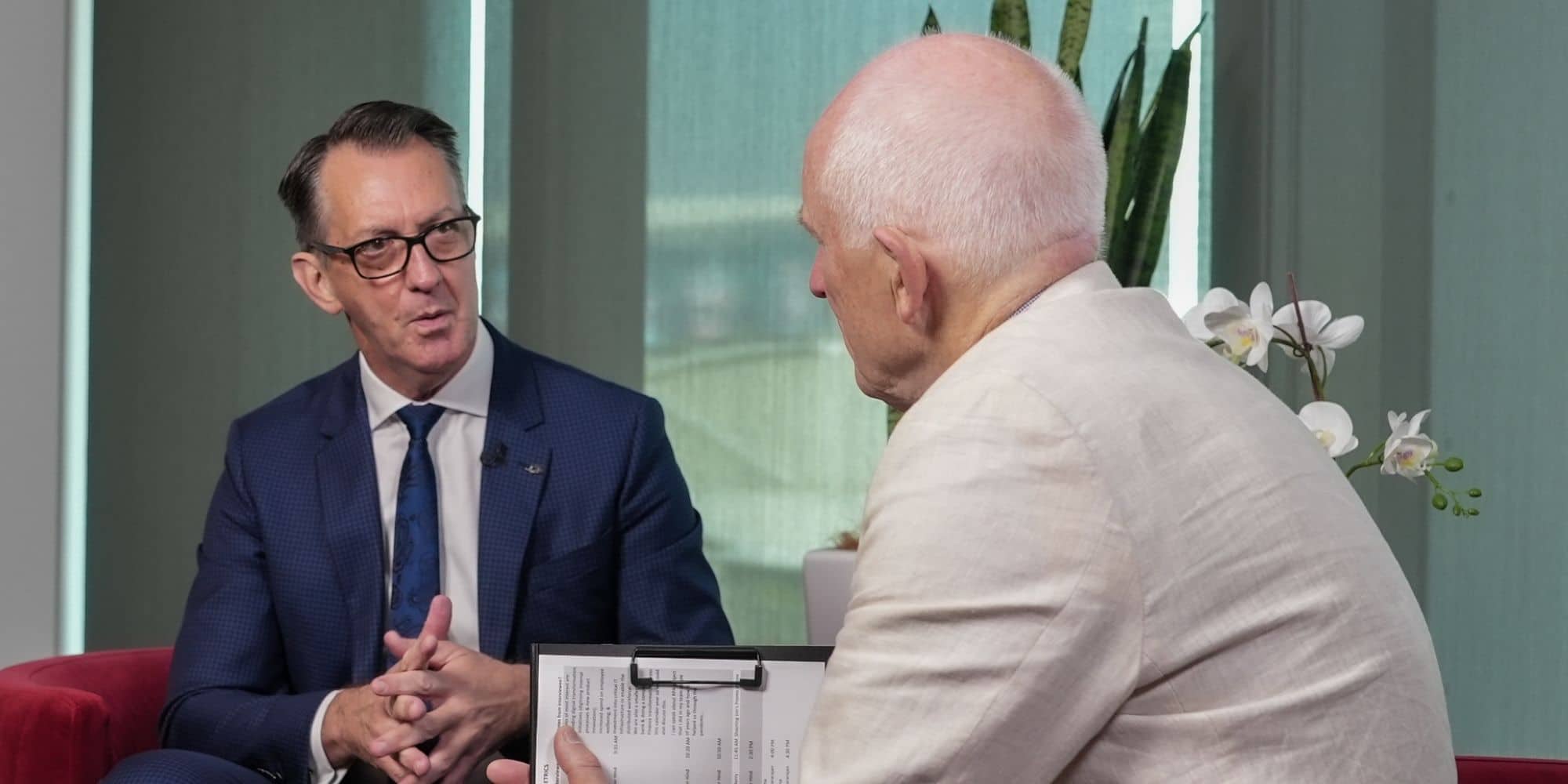
Peter Hind:
Your old staff, Bill, because this transformation takes them on a journey into a new place. How easy was it to migrate them to this new world?
William Schafer:
It’s very easy. Through our branches, we’ve got people who are there with a real desire to serve. In Central Queensland, we are well-known, have a good brand, and know our customers.
Some of those branch workers have been in there for decades, and they know the people who come through the doors.
They know families, know their birthdays, and know where they’ve been on holidays, but they want to deliver the best service.
They also realise that along with that face to face, there is another level that they can take the customers to.
We’ve been able to deliver that with their cooperation. At no stage have we had people holding back. It’s a competition to get the financing for your digitisation project. It’s been great.
Peter Hind:
I want to explore one point you made a few moments ago about a data-driven business, data for decision-making, and yet I can’t inherently feel, but finance is all about data; that’s your bread and butter.
What’s different about this new data-driven world?

William Schafer:
Well, for example, one of the things I had to convince the other chiefs about with the finance digitisation process, the transformation we’re going through, is at the end of it, will this be a nice, efficient thing for finance to save themselves work or will it deliver?
One of the undertakings we had to give was at the end of that, each of our products will be able to be evaluated, profitability will be clear, and the same for the customer services and the operation services.”
The CEO and the board will be able to look at each product and through data-driven decision-making decide what we’re doing well, and what we don’t do anymore.
This is basic stuff, but bank legacy systems don’t facilitate this very well, and we need to take it to the next level.
Peter Hind:
Are any interesting insights that this data insight, this exploitation of data, is giving you?
William Schafer:
One of the things is you must always bring the risk parameters into view. We have a Chief Risk Officer.
We need to ensure that everything we do has the scope of regulatory risk over it, operational risk, and, most importantly, the reputational risk for banks today.”
The reputation of your bank is everything, as we know. Our big cousins on the other side of town have been through a very tough time; we have fortunately been able to escape that because we’re smaller, we’re agile, we have good systems, but trust is everything in the bank.
We need to make sure that while we go through this, we can deliver our services seamlessly and there is no fallout, there are no times when you can’t do your banking, but most importantly, you are delivering service and not trying to gouge your customers or be seen to be gouging at them. You are delivering to them.
Peter Hind:
I sense you are also saying, though it presents opportunities for you as an organisation. You can address opportunities that big banks may have rejected.
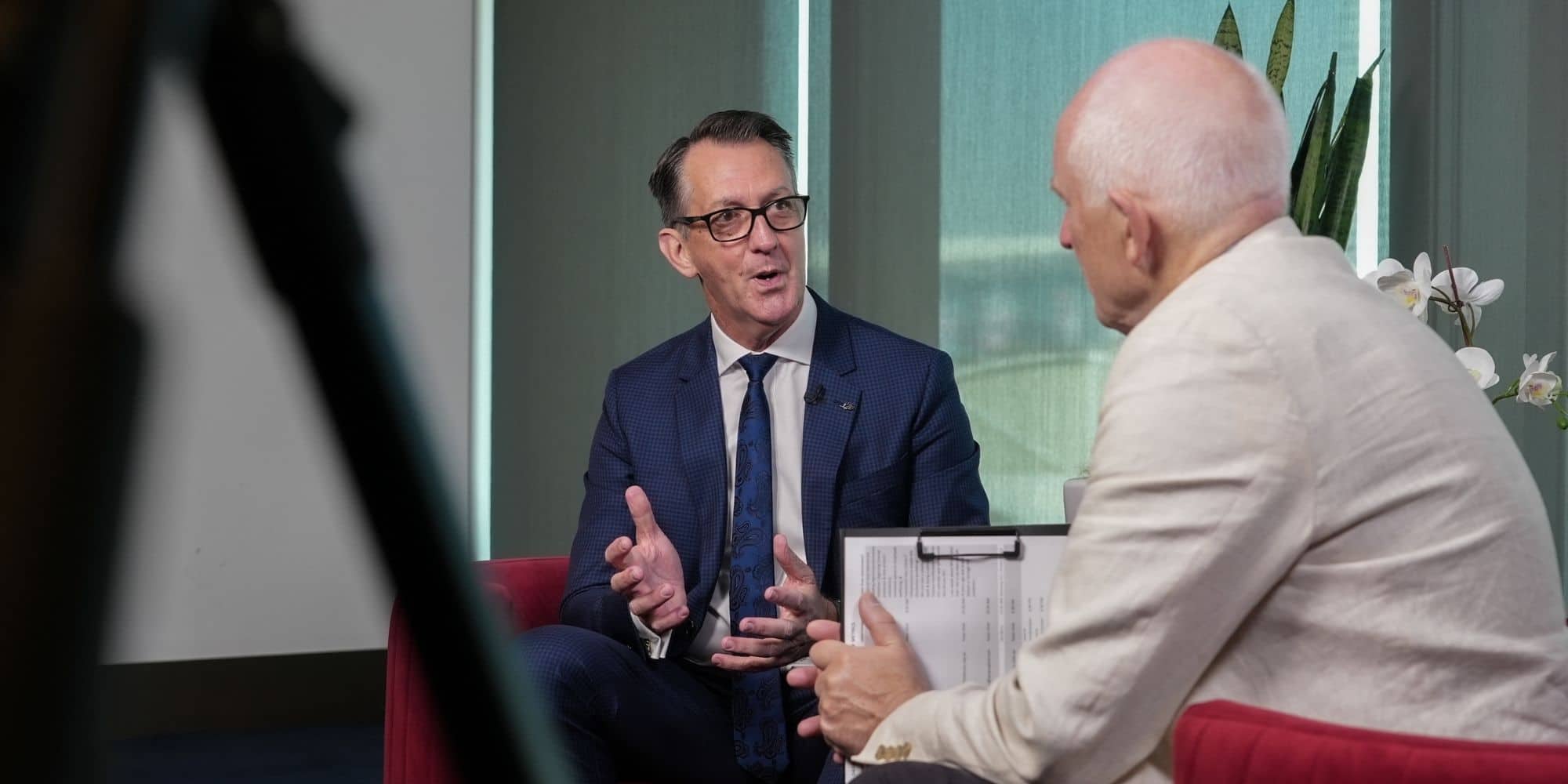
William Schafer:
Sure. We have, for example, what we call our private bank.
These are high net worth individuals, but not super-rich people, people looking for a big home loan. We’ve got a team of people who can deliver a one-to-one service with them.”
That is probably what the bigger banks are moving away from; they don’t have that capacity.
As a smaller community bank, we had that, and that is growing exponentially; the problem is finding the staff and the talent to keep pace with the growth in it as we can deliver as well as a digitised service, someone to talk to if they have a problem.
It is going to be a big growth area for us.
Peter Hind:
Digitisation gives you the tools in some ways to serve those people.
William Schafer:
Absolutely. We can concentrate on service, on things that matter, rather than the process of the transaction.
People don’t want to be filling out reams and reams of paper; they want to talk about themselves and their needs and how we can help them out.
























